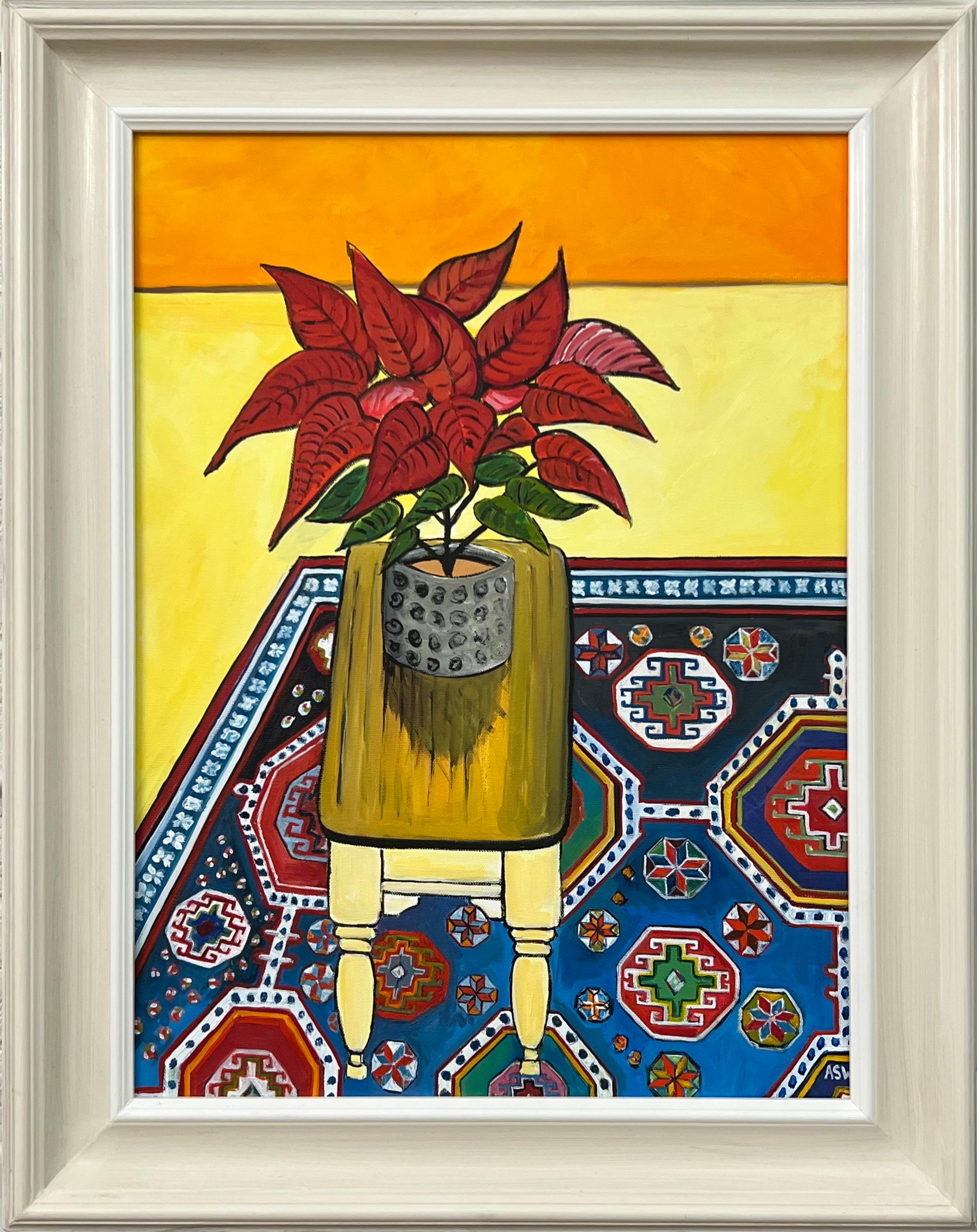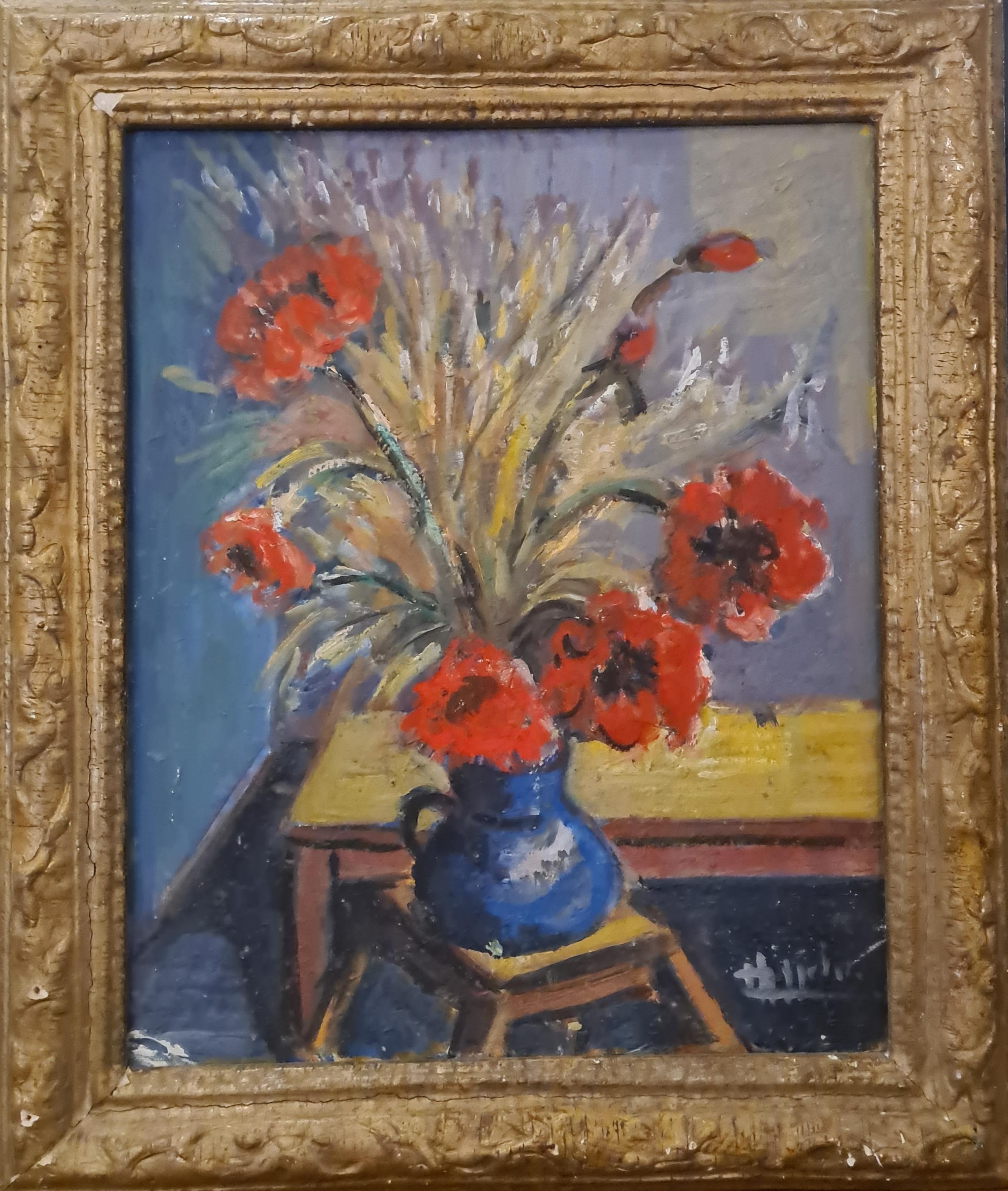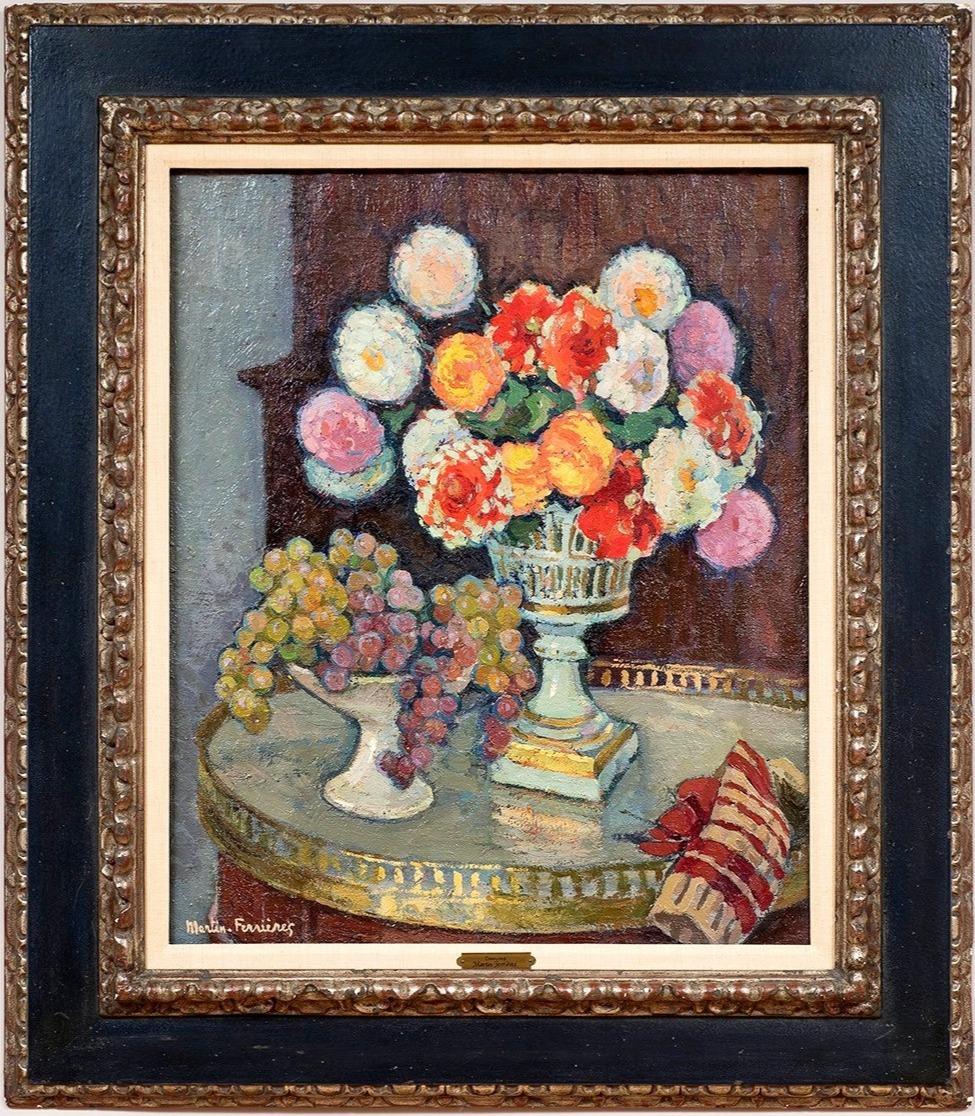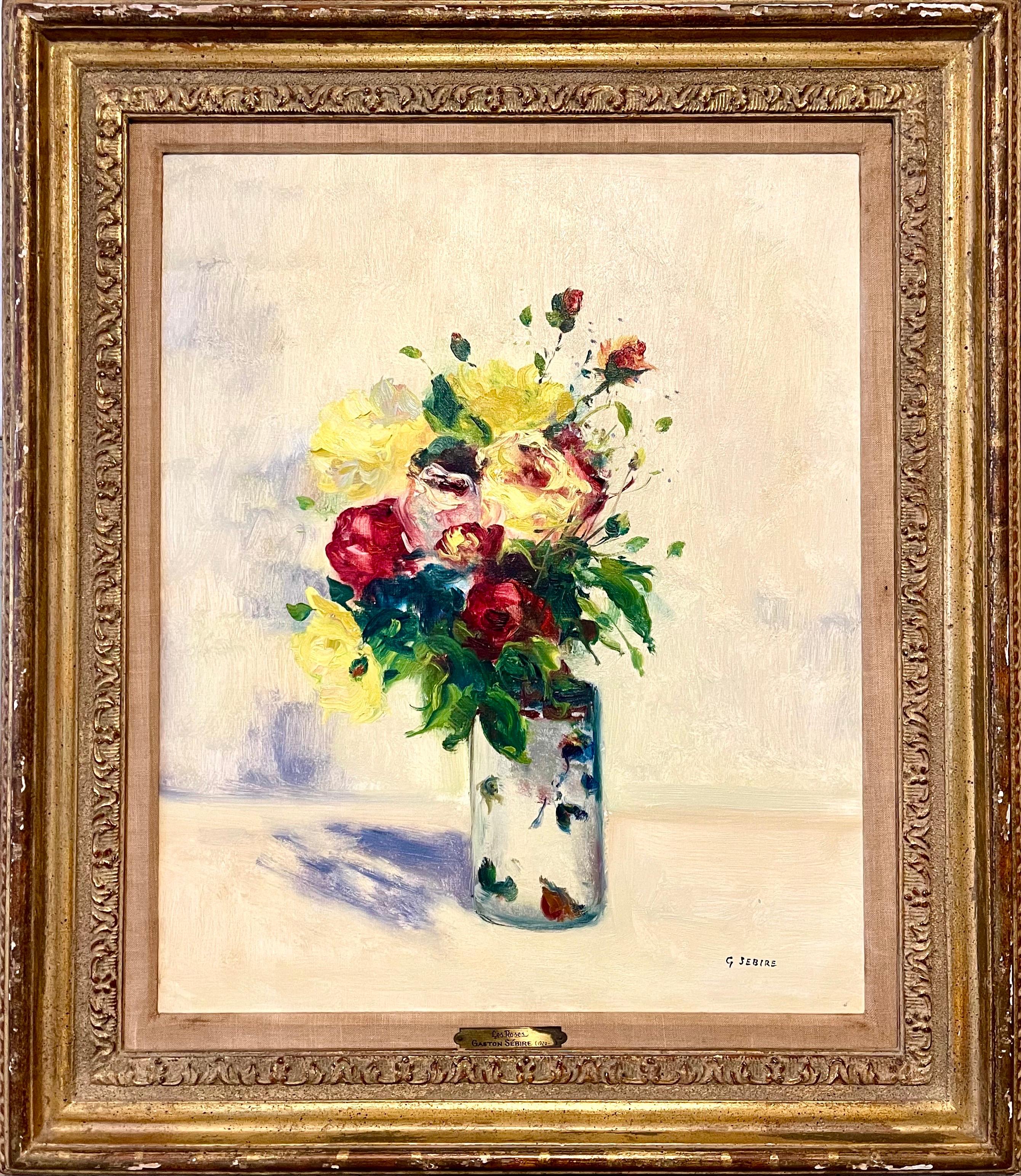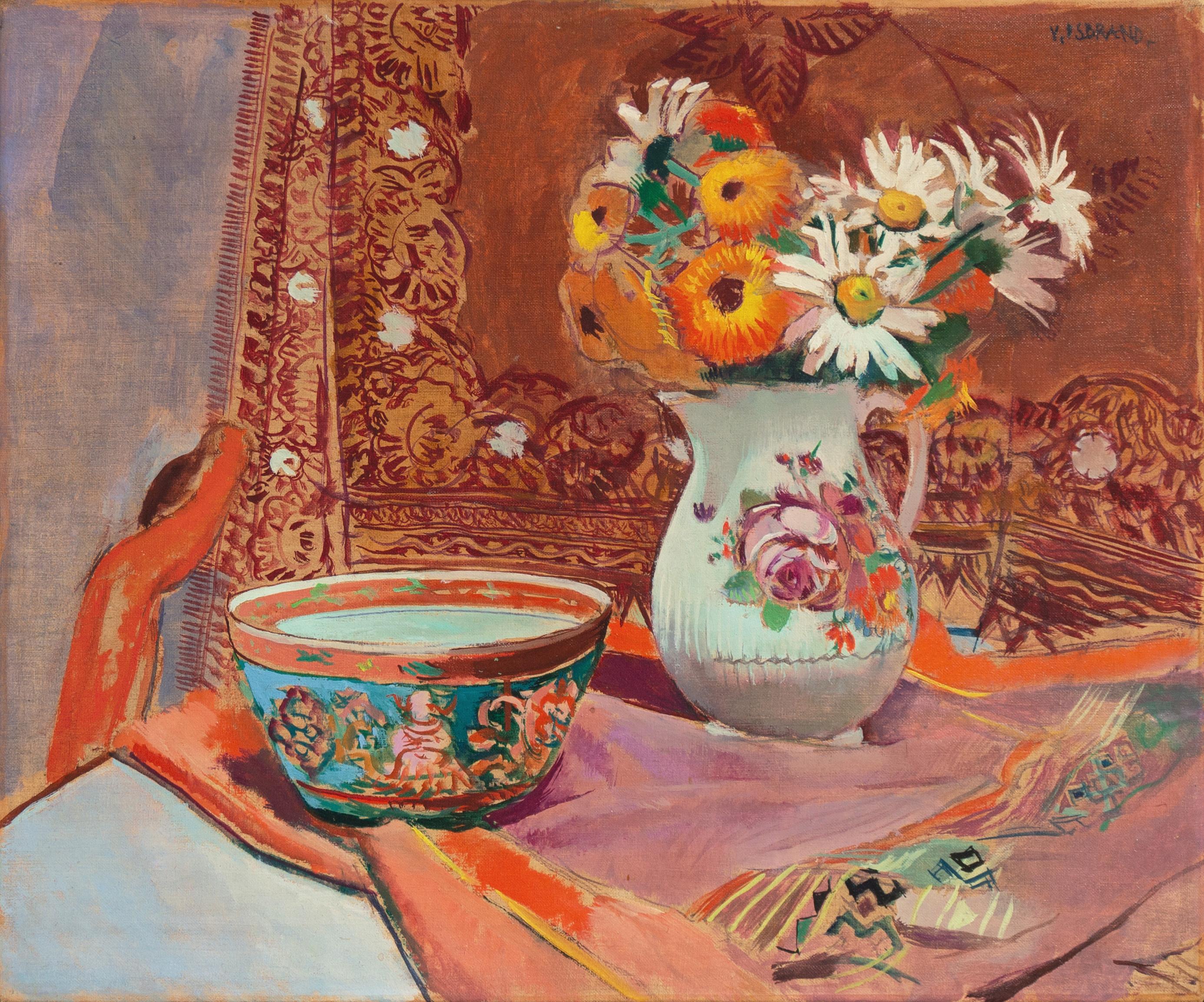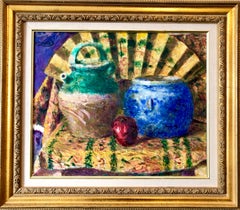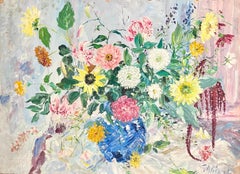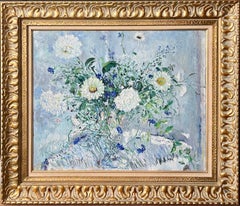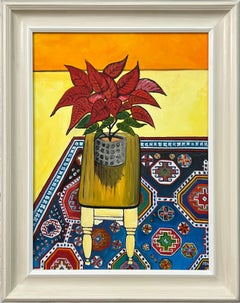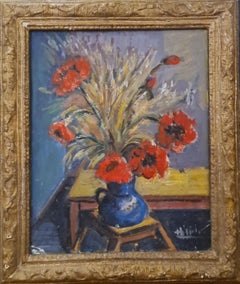
Japanese Fauvist Colorful Oil Painting Chinese Ceramic Jars with Fan and Apple
View Similar Items
Want more images or videos?
Request additional images or videos from the seller
1 of 14
Yoshio AoyamaJapanese Fauvist Colorful Oil Painting Chinese Ceramic Jars with Fan and Apple1981
1981
About the Item
About the Seller
4.9
Platinum Seller
These expertly vetted sellers are 1stDibs' most experienced sellers and are rated highest by our customers.
Established in 1995
1stDibs seller since 2014
1,591 sales on 1stDibs
Typical response time: 1 hour
Authenticity Guarantee
In the unlikely event there’s an issue with an item’s authenticity, contact us within 1 year for a full refund. DetailsMoney-Back Guarantee
If your item is not as described, is damaged in transit, or does not arrive, contact us within 7 days for a full refund. Details24-Hour Cancellation
You have a 24-hour grace period in which to reconsider your purchase, with no questions asked.Vetted Professional Sellers
Our world-class sellers must adhere to strict standards for service and quality, maintaining the integrity of our listings.Price-Match Guarantee
If you find that a seller listed the same item for a lower price elsewhere, we’ll match it.Trusted Global Delivery
Our best-in-class carrier network provides specialized shipping options worldwide, including custom delivery.More From This Seller
View AllJapanese Fauvist Colorful Oil Painting Chinese Ceramic Jars with Fan and Apple
Located in Surfside, FL
Yoshio Aoyama (Japanese, 1894-1996) "Nature Morte". Oil on canvas. 1981. Signed 'Aoyama' (upper left). Signed and titled 'Nature Morte' verso. 15" x 18" ...
Category
1980s Fauvist Interior Paintings
Materials
Canvas, Oil
Large Bold Modernist Floral Bouquet Impasto Oil Painting Flowers Samuel Rothbort
By Samuel Rothbort
Located in Surfside, FL
Samuel Rothbort (1881-1972)
Floral, oil on canvas mounted board
22 x 30 1/2 in (55.9 x 77.5 cm),
Hand signed lower right.
Provenance: From the estate of the artist by descent t...
Category
20th Century Post-Impressionist Interior Paintings
Materials
Oil, Canvas, Panel
French Post Impressionist Oil Painting Floral Roses, Vase Gaston Sebire Flowers
By Gaston Sebire
Located in Surfside, FL
Les Roses
Mixed bouquet of roses, Oil painting
PROVENANCE: Purchased at Findlay Galleries in Chicago, Illinois late 1960’s bears their label verso and has their original price tag
...
Category
1960s Post-Impressionist Still-life Paintings
Materials
Oil, Canvas
Bold Folk Art Modernist Floral Bouquet Oil Painting Flowers in Vase Gilt Frame
By Samuel Rothbort
Located in Surfside, FL
SAMUEL ROTHBORT (Russian-American, 1882-1971), still life with wild flowers, oil on canvas board, signed lower left.
Framed 25.5 X 30, board 18.5 X 23
Samuel Rothbort (Russian American Jewish folk artist 1881-1972) was born in the small town, shtetl of Wolkovisk in the Russian Woodlands.During his youth he worked as a cantor and traveled to various towns and villages, gaining many impressions of life in that era. Poverty as well as the political unrest of the times led to his immigration to America in 1904. Upon arrival in America, Samuel Rothbort worked as a laborer and muralist eventually giving that up to become a watchman of newly built homes. While on duty he began molding figures in clay and upon the advice and encouragement of his employer and colleagues he began to take his artistic talents more seriously and pursued this endeavor. Rothbort therefore began doing free-hand painting, murals on walls and ceilings for private homes and commercial establishments. In 1909 he met and married Rose Kravitz, which marked the start of his career as an artist. Well known for his scenes of New York City life, executed in heavy impasto. Rothbort exhibited from the 1920s-60s, at the Salons of America, Pratt Institute, Brooklyn Museum, and a gallery at Rockefeller Center; however, he refused to sell his work, and in 1948, opened the Rothbort Home Museum of Direct Art, in his studio-home.
Samuel Rothbort was a self taught, naive, outsider artist painting every subject in his own folk art impressionistic style. His artistic range was broad and he never stopped creating. He was fascinated with nature and his works are filled with his delightful perceptions of his surroundings. Rothbort worked in oil, watercolor, and pen & ink. In the years of the depression there was little money, Rothbort could not afford paint or canvas. It was there that he began carving wood and stone using found materials like driftwood, rails, and old fence posts.
Rothbort entered the art world and spent much of his life in pursuit of modernist painting and sculpture. He was a member the Society of Independent artists, the Salons of America, the People's Art Guild, and the Brooklyn Society of Artists. During the 1920's and early 1930's , Samuel Rothbort was regularly represented in exhibitions organized by The Brooklyn Museum of Art. Through the 1930's , Rothbort exhibited his watercolors and sculptures at Grant Studios in Brooklyn. In 1940, he began a 28 year relationship with the Barzansky Gallery on Madison Avenue in New York City exhibiting oils, watercolors, and sculpture in individual and group shows.
From 1915 through the 1960's, he was represented by many commercial galleries. Hamilton Easter Field, artist, publisher and founder of the Brooklyn Society of Artists was an early supporter of Rothbort's artwork and helped further his career.
Rothbort received much recognition for his naive folk art paintings...
Category
20th Century Post-Impressionist Interior Paintings
Materials
Oil
American Impressionist Fruits, Vegetables and Bottle Oil Painting
By William Schultz
Located in Surfside, FL
William J. Schultz, American (1919 - 2005)
William J. "Bill" Schultz had been a renowned American Impressionist artist and teacher for over sixty-five years.
Co-Founder, and Director of the AIS had inspired numerous professional artists and teachers through his teaching. He also was a Master Pastelist in the Pastel Society of America and had won many awards for his oil and pastel paintings.
Born in Pittsfield, Massachusetts in 1919, he died in Vero Beach, Florida in 2005. He served in the Army in World War II including duty in Europe. He was discharged in 1946 with rank of First Sergeant. Schultz began his art studies with Martin C. Hoy, a fine artist and student of Robert Henri and William M. Chase. He graduated from The Vesper George School Of Art in Boston, Massachusetts in 1949. He then studied under National Academicians Jerry Farnsworth, Ivan Olinsky (a student of John Singer Sargent) and Robert Brackman. Winner of many awards for oil and pastel works. Was a noted portrait artist.
He was a founding Director of the American Impressionist Society and an award winning member of the Pastel Society Of America. He studied under notable National Academicians Robert Brachman, Ivan Olinsky and Jerry Farnsworth.
Schultz opened his own art studio and school in Lenox, Massachusetts and taught impressionist painting to hundreds of students, some of whom are now nationally recognized themselves. After 25 years at that location Schultz and his wife moved to Vero Beach, Florida where he continued to teach, as well as provide lectures and exhibitions around the country.
Illustrated articles about Schultz and his work have appeared in "American Artist", "Southwest Profiles", "Artists Of Florida" and other periodicals.
For a short time he studied alongside Norman Rockwell at a studio in Stockbridge, Massachusetts where Rockwell had established the base for his illustration work. Schultz was the proud possessor of an autographed sketch of himself that Norman Rockwell had created and was signed by Rockwell.
Schultz's art has been exhibited in museums and galleries in Boston, New York City, Sante Fe, and numerous Florida locations...
Category
20th Century American Impressionist Interior Paintings
Materials
Canvas, Oil
American Impressionist Fruits Oil Painting Vivid Apples and Grapes
By William Schultz
Located in Surfside, FL
William J. Schultz, American (1919 - 2005)
William J. "Bill" Schultz had been a renowned American Impressionist artist and teacher for over sixty-five years.
Co-Founder, and Director of the AIS had inspired numerous professional artists and teachers through his teaching. He also was a Master Pastelist in the Pastel Society of America and had won many awards for his oil and pastel paintings.
Born in Pittsfield, Massachusetts in 1919, he died in Vero Beach, Florida in 2005. He served in the Army in World War II including duty in Europe. He was discharged in 1946 with rank of First Sergeant. Schultz began his art studies with Martin C. Hoy, a fine artist and student of Robert Henri and William M. Chase. He graduated from The Vesper George School Of Art in Boston, Massachusetts in 1949. He then studied under National Academicians Jerry Farnsworth, Ivan Olinsky (a student of John Singer Sargent) and Robert Brackman. Winner of many awards for oil and pastel works. Was a noted portrait artist.
He was a founding Director of the American Impressionist Society and an award winning member of the Pastel Society Of America. He studied under notable National Academicians Robert Brachman, Ivan Olinsky and Jerry Farnsworth.
Schultz opened his own art studio and school in Lenox, Massachusetts and taught impressionist painting to hundreds of students, some of whom are now nationally recognized themselves. After 25 years at that location Schultz and his wife moved to Vero Beach, Florida where he continued to teach, as well as provide lectures and exhibitions around the country.
Illustrated articles about Schultz and his work have appeared in "American Artist", "Southwest Profiles", "Artists Of Florida" and other periodicals.
For a short time he studied alongside Norman Rockwell at a studio in Stockbridge, Massachusetts where Rockwell had established the base for his illustration work. Schultz was the proud possessor of an autographed sketch of himself that Norman Rockwell had created and was signed by Rockwell.
Schultz's art has been exhibited in museums and galleries in Boston, New York City, Sante Fe, and numerous Florida locations...
Category
20th Century American Impressionist Interior Paintings
Materials
Canvas, Oil
You May Also Like
Still life with apples 1961. Canvas, oil, 50x70 cm
Located in Riga, LV
Still life with apples
1961. Canvas, oil, 50x70 cm
Published at book Biruta baumane on 78 page
"Still Life with Apples" is a stylized still life pain...
Category
1960s Fauvist Still-life Paintings
Materials
Oil, Canvas
Still Life Painting of a Poinsettia Plant on a Persian Rug by British Artist
By Angela Wakefield
Located in Preston, GB
Still Life Painting of a Poinsettia Plant on a Persian Rug by Contemporary British Artist
Art measures 18 x 24 inches
Frame measures 24 x 30 inches
Angela Wakefield has twice bee...
Category
2010s Fauvist Still-life Paintings
Materials
Canvas, Paint, Acrylic
The Blue Vase
Located in Cotignac, FR
French Mid 20th Century oil on board Fauvist still life, flowers in a vase in an interior scene, by Hyppolite Roger. The painting is signed bottom righ...
Category
Mid-20th Century Fauvist Still-life Paintings
Materials
Board, Oil
$1,417 Sale Price
20% Off
Still Life w Bouquet of Dahlias in Vase & Compote of Grapes on Table circa 1955
By Jacques Martin-Ferrières
Located in Rancho Santa Fe, CA
Jacques Martin-Ferrières was born on August 6, 1893 in Saint-Paul, France. He studied under the French academic painter Frederic Cormon (1845-1924) and with his father, the notable F...
Category
1950s Post-Impressionist Still-life Paintings
Materials
Canvas, Oil
Still Life with a Bouquet of Dahlias in a Vase & Compote of Grapes on a Table
By Jacques Martin-Ferrières
Located in Rancho Santa Fe, CA
Jacques Martin-Ferrières was born on August 6, 1893 in Saint-Paul, France. He studied under the French academic painter Frederic Cormon (1845-1924) and with his father, the notable F...
Category
1950s Post-Impressionist Still-life Paintings
Materials
Oil, Canvas
Nature morte au bouquet d’animones Still Life Fruit & Flowers Scotch circa 1960
By Jacques Martin-Ferrières
Located in Rancho Santa Fe, CA
Jacques Martin-Ferrières
Nature morte au bouquet d’animones (Still life with anemones, oranges, lemons, bananas and a bottle of Johnnie Walker Red Scotch)
Framed Dimensions: 35 x 28.5 inches
Signed: Lower Left
Provenance:
Chantal Dalmais, Paris
Jean Claude Gauteur, Zurich, 1986
Piguet Hotel des Ventes, Geneva, 2021
Private Collection
To be included in the forthcoming catalogue raisonne on the artist in preparation by Marie-Anne Destrebecq.
Jacques Martin-Ferrières was born on August 6, 1893 in Saint-Paul...
Category
1950s Post-Impressionist Still-life Paintings
Materials
Oil, Canvas
Recently Viewed
View AllMore Ways To Browse
Fauvist Garden
Chinese Fan Vintage
Pink Japanese Ceramic
Spanish Fan Vintage
Traveling Secretary
Vintage Japanese Floats
Spanish Oil 16th
Fine Art Oriental Prints Framed
Picasso Blue Nude Print
Marc Chagall Visions Of Paris
Picasso Morte
Matisse Blue Nudes Framed
Nature Morte Picasso
China Nude Oil Painting
Tower Of Babel
Henri Matisse Blue Nude
Secretary Japan
Chagall Ceramic

